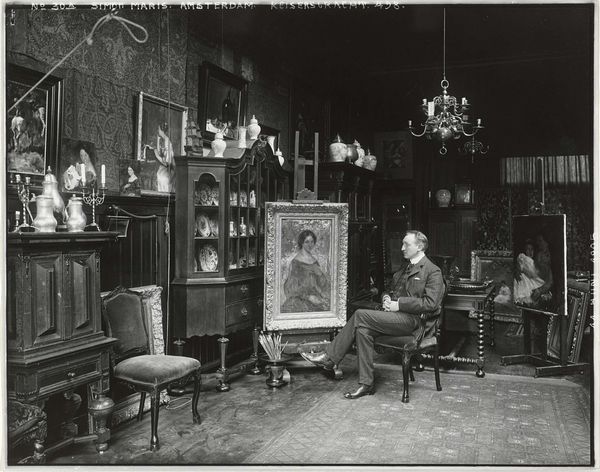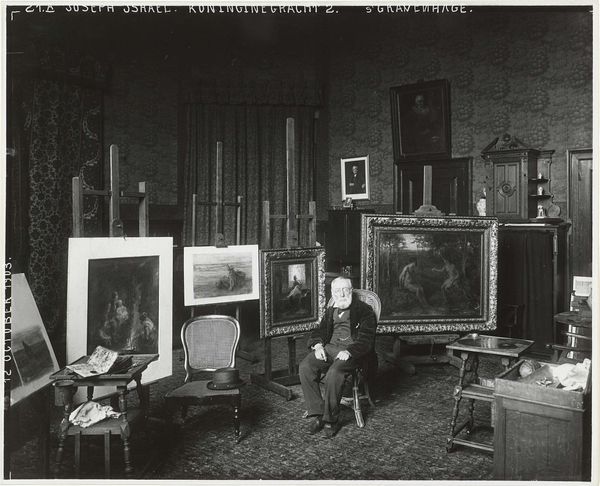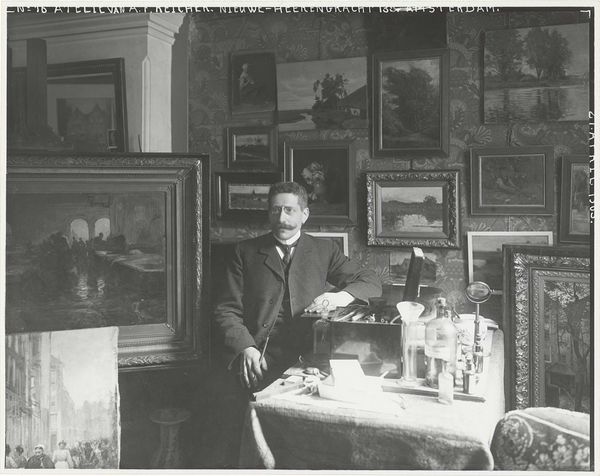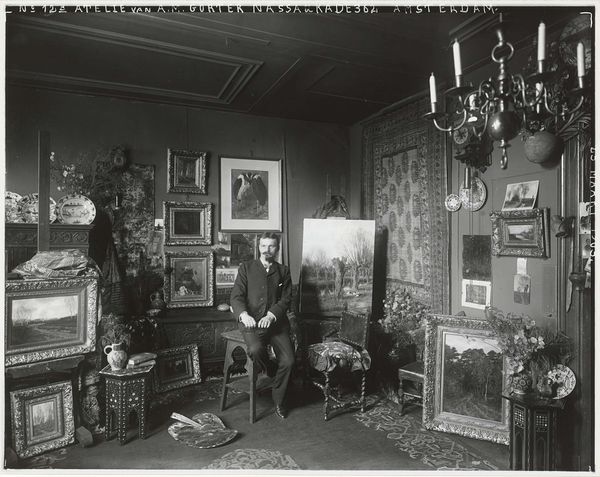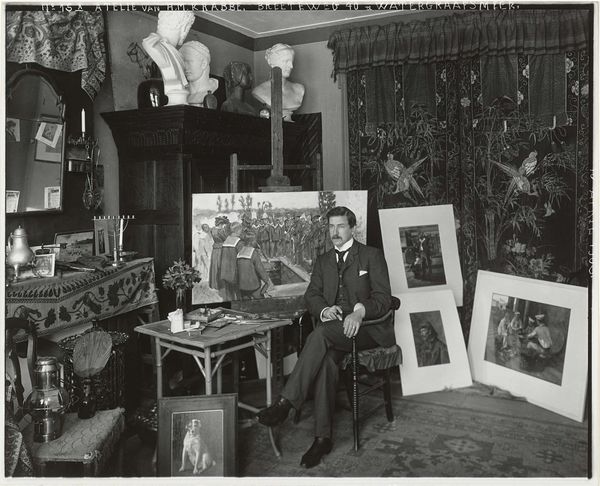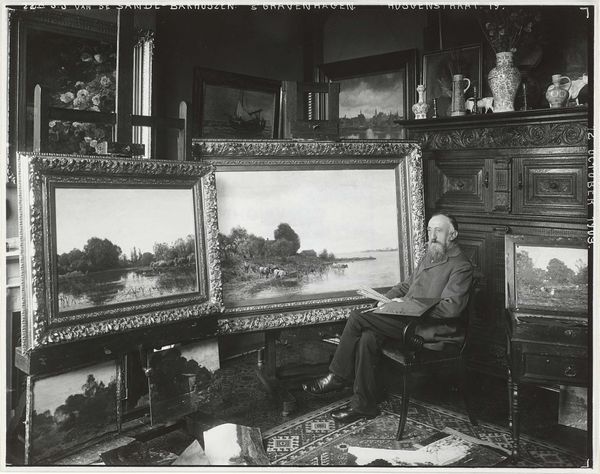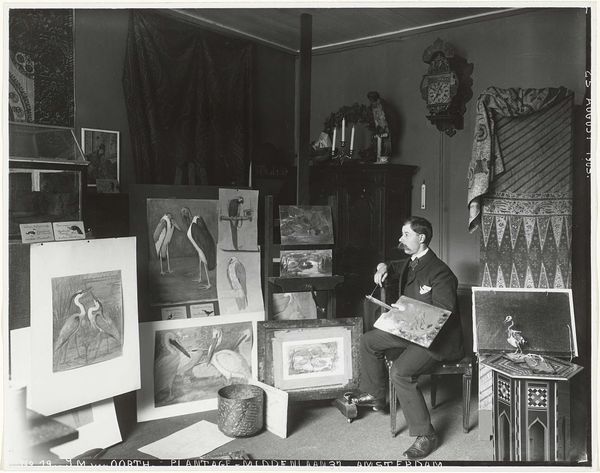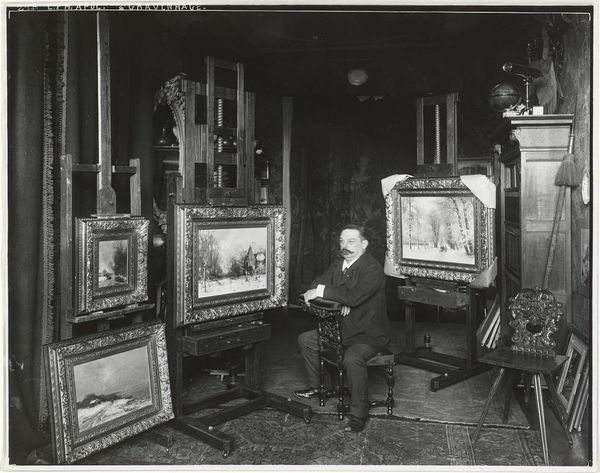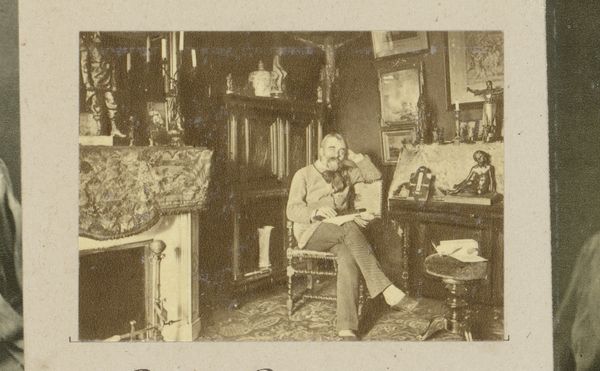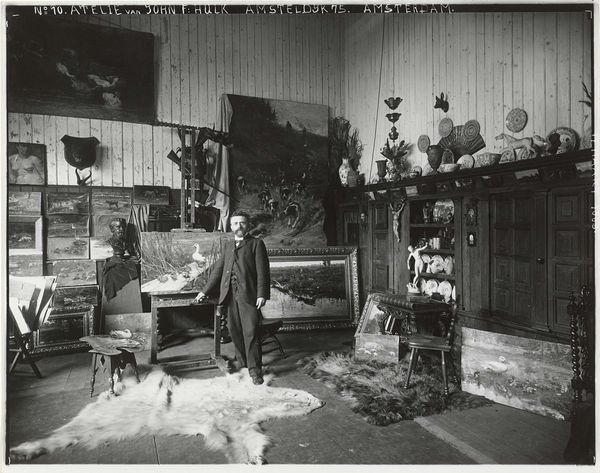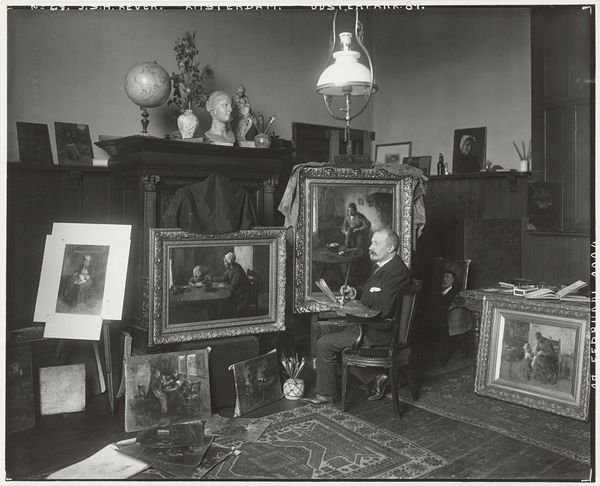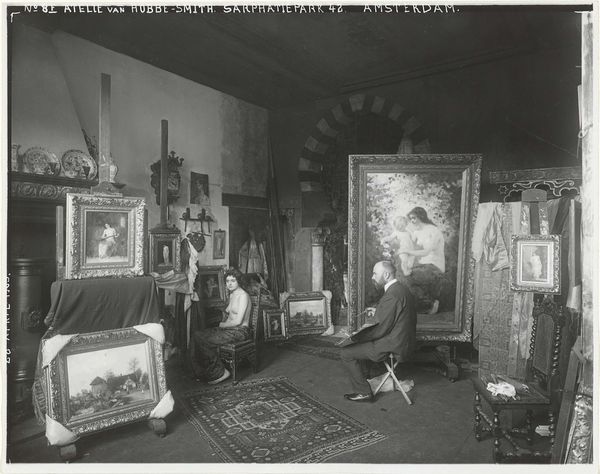
Dimensions: height 244 mm, width 303 mm
Copyright: Rijks Museum: Open Domain
Editor: So, this is a gelatin-silver print titled "Willem Carel Nakken in zijn atelier in Den Haag." It’s from somewhere between 1903 and 1946, taken by Sigmund Löw. The image is filled with paintings! I find the sheer volume of art in the room, a visual overload, quite compelling. What catches your eye when you look at it? Curator: What's striking is how this photograph operates as both a portrait and a statement on artistic production. The photograph, and the atelier it depicts, becomes a site where identities—the artist’s and his subjects'— are negotiated and performed. Note the landscape and equine paintings, likely aimed at a specific segment of society at the time, speaking volumes about patronage and class. Do you see a dialogue between Nakken's self-representation and the expectations of his market? Editor: Yes, I see what you mean. The paintings are carefully displayed around him. I guess I hadn't considered that the arrangement itself is a kind of…performance? Do you think there's an element of social critique, or is it purely celebratory? Curator: It’s not a question of either/or, but both. These spaces aren’t neutral. Photography can play an interesting role in shaping the way we think about art, gender, and societal privilege, by reinforcing or subtly subverting those values. Editor: So, in understanding Nakken, we also have to consider how photography itself plays into shaping these societal narratives. Curator: Exactly. The photograph prompts us to critically engage with Nakken’s choices, not just as an artist, but as a figure positioned within specific social and economic structures of the time. It invites us to unravel this complicated nexus of social codes, values, and power relations. Editor: This makes me look at the picture from a completely different angle. I appreciate seeing it as a critical commentary. Curator: I think grappling with the intersectional historical context is always rewarding.

